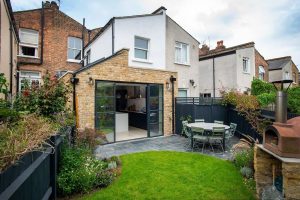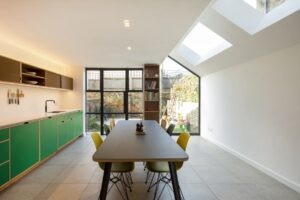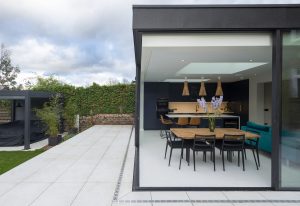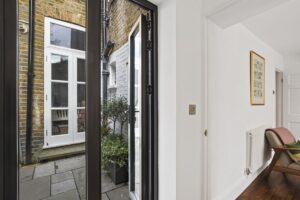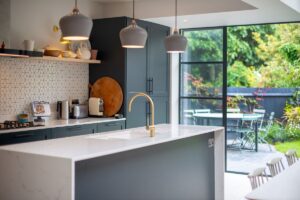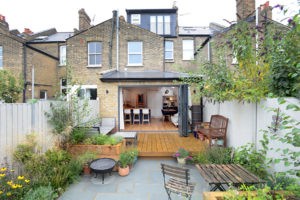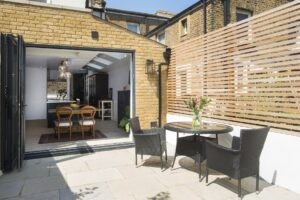There are many points to consider when planning an extension or conversion. One of the most important elements is the type of doors to be installed. Choosing the right design is really important as this affects both the functionality and the aesthetics of the new space. The type of door you choose will also influence the amount of light that flows in, how the air in the space flows and how the different rooms connect. There are many different design options to consider.
Pocket doors are a popular choice. Unlike hinged doors, they are space-saving, which makes they ideal for smaller and multi-purpose areas. Pocket doors are modern, stylish and can help to create a versatile living environment. Should you install pocket doors in your extension or conversion? It’s your choice, but we bring you all the pros, styles and valuable tips to help you make the right decision.
What are Pocket Doors?
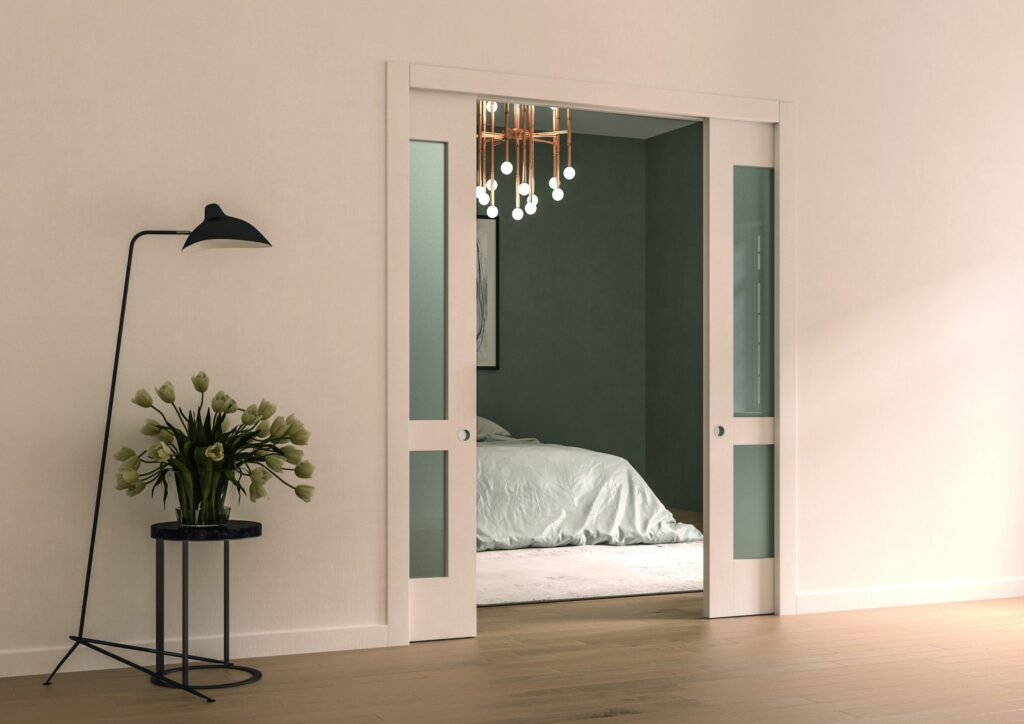
Pocket doors are sliding doors that slide neatly into a wall cavity on either side of the doors – thus saving valuable floor space. Pocket doors come in different styles in many colours and some include glass features. It is important to choose a style that complements the character of the new extension or conversion.
Pocket doors are contemporarily styled and very sleek as they do not need a door frame. They are perfect for modern, minimal spaces or one where space is optimum. Pocket doors can be used to split a room in half, making it more functional. The beauty of having pocket doors is that they can be left open to make one larger space or closed to separate two rooms completely.
Many people ask the question – pocket doors vs sliding doors, which are best? Pocket doors differ from sliding doors because although they both save space, they function in different ways. Sliding doors slide open and remain visible on the wall, whereas pocket doors slide into a wall cavity and are stored out of view. This point makes them ideal for smaller spaces where wall space is limited. Both styles are modern and space-saving, but pocket doors are more discreet when fully open.
What Styles are Available for Pocket Doors?
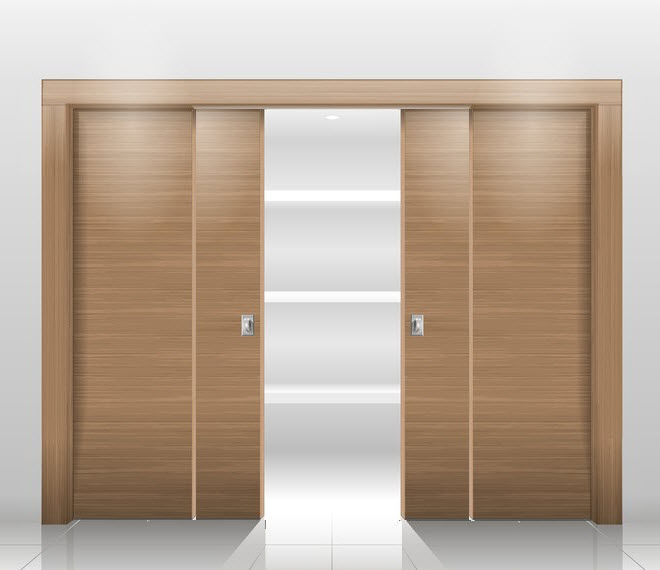
Single pocket doors are very popular as they are versatile and a great way to save space – for example, as the entrance to a storage area or pantry. Double pocket doors can be used to create a larger opening which is ideal when creating a zone in a the new space for a home office or library.
Telescopic pocket doors create and even larger opening as they usually consist of four panels and are perfect for creating an optional doorway between a longe and dining room or dining room and kitchen. Curved pocket doors are very stylish and definitely make a design statement when used in larger rooms.
Pocket Doors for Noise Reduction
Pocket doors can help to reduce noise and provide privacy between the different areas in your extension or conversion. The type of pocket door chosen is important. Solid-core pocket doors are far superior than hollow-core ones when it comes to noise reduction because they are denser and block more sound. Acoustic seals can be used around the frame to minimise sound further and high-quality track hardware is also recommended. Pocket doors are ideal when only moderate noise control is required.
Energy Efficiency
You will no doubt be wanting your new extension or conversion to be as energy-efficient as possible. It is well worth considering the insulating properties of different materials used for pocket doors to help maintain a comfortable room temperature. The best thermal insulation is provided by solid core doors with an MDF core.
Hollow core doors are manufactured with a light honeycomb interior and this allows greater heat transfer. To optimise energy efficiency, quality seals and weather strips around the door frame will minimise draughts. Installation by experts will significantly improve the insulating performance of the doors.
Accessibility Features
Pocket doors make accessibility easier for everyone because they eliminate the need for space to open and provide a wider and more manoeuvrable passage without any obstructions. This benefit is particularly useful for people using mobility aids as it means they can move more easily from one room to the next.
To optimise accessibility, adhere to the guidelines in Approved Document M of the Building Regulations and BS8300. The guidelines cover the required height for handles and pulls and their design. The door should provide a minimum opening width of 775 mm to accommodate wheelchairs easily. Proper installation will ensure that the doors glide with minimal effort. The track system should be top quality to endure frequent use.
Durability & Maintenance
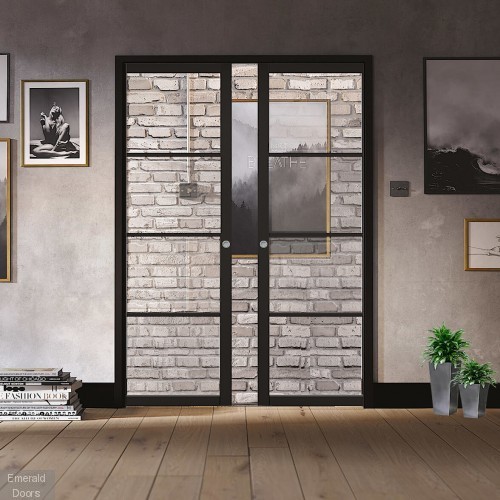
To ensure that the pocket doors will stand up to regular use, it is crucial to choose the door materials carefully. Solid wood doors are very robust and feel good, but they can be prone to warping in certain environmental situations. Solid core doors with a veneer exterior offer enhanced durability and soundproofing and are less susceptible to warping so also require minimal maintenance.
In contrast, hollow cores are not as durable and damage more easily. This leads to higher levels of maintenance and the need for them to be replaced more quickly. As well as the doors, it is important to invest in quality hardware. The tracks and rollers play a key part in the durability of pocket doors and ease of maintenance. It is definitely worth investing in high quality doors and hardware to extend their lifespan.
Maintaining pocket door hardware ensures its smooth operation. There are four important points to remember:
1. Clean the hardware regularly
Dust and debris will easily get trapped on the track and rollers and this will hinder their movement. Regularly clean them with a vacuum cleaner to get rid of all the loose particles and afterwards wipe them with soap and water to get rid of any stubborn dirt.
2. Keep the hardware lubricated
To ensure that the pocket doors glide effortlessly, regularly apply a silicone-based lubricant. Do not be tempted to use an oil-based lubricant as this will attract more dust and dirt.
3. Inspect the hardware
Over times, screws and other components will loosen. Regularly check the pocket doors for any problems and resolve them quickly to ensure their continued smooth operation.
4. Check the alignment of the pocket doors
Regularly check that the door is well-aligned within its track. The tell-tale signs of misalignment are sticking or uneven movement of the door. If this happens, adjust the rollers or track to restore the door’s easy function
Space Planning with Pocket Doors
Pocket doors are an effective way to enhance space in both open-plan rooms and smaller spaces. In open-plan layouts, pocket doors can be used to partition different areas. They can be used to create smaller private spaces when needed and can maintain a light, bright and inviting space when the doors are open. In smaller spaces, pocket doors are functional, versatile and space-saving.
Customizing Pocket Doors for Unique Spaces
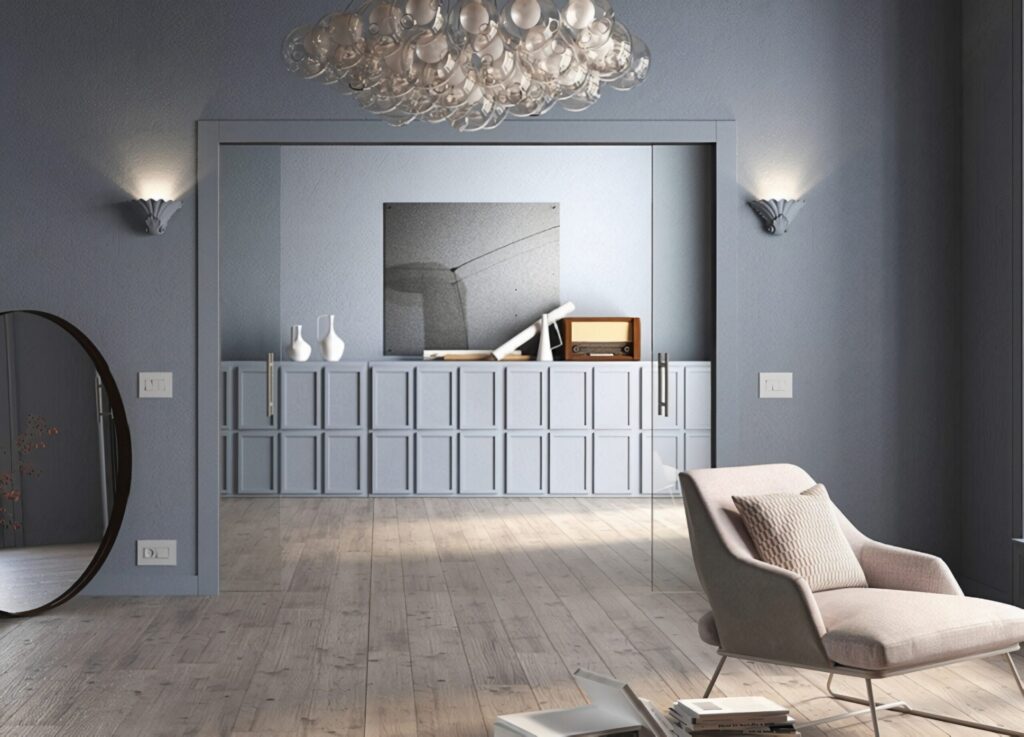
It is possible to get customised pocket doors that will fit non-standard sized openings. This gives houseowners a seamless integration of the doors so that they complement the architecture of the room. This is really beneficial in areas that have limited space and/or a distinctive structural feature as this ensures that space is maximised without compromising on style. A number of manufactures offer bespoke pocket doors that solve such problems.
Aesthetic Value and Modern Design Trends
Pocket doors are the perfect way to enhance the contemporary aesthetics of a space as they have a sleek and minimalist look and slide seamlessly into wall cavities – with no visible hinges etc. There is no need for space for them to open like a traditional door. Pocket doors have clean lines and complement modern design ideas perfectly. They can be customised using a variety of materials and finishes so that they complement the décor or can become a contemporary statement piece.
Crittall pocket doors are very distinctive as they have slim black metal frames and glass panes. They combine industrial minimalism with modern functionality and are popular in modern home extensions as they enhance a contemporary style.
Cost-Effectiveness of Pocket Doors
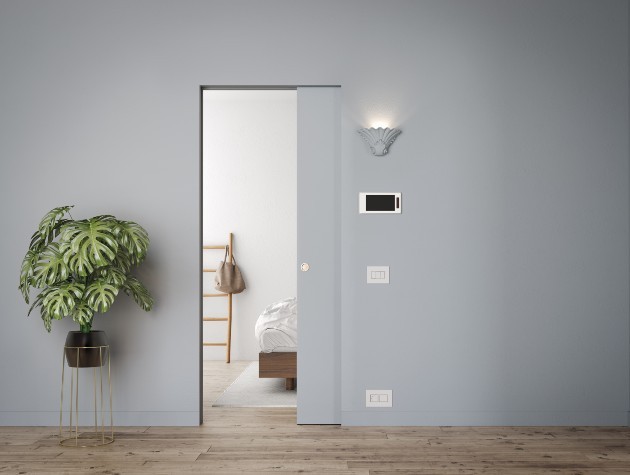
Pocket doors cost more to install than traditional doors because wall cavities need to be made on both sides of the doorway and top quality specialist hardware is also needed. Although the initial financial outlay may be greater, pocket doors certainly offer long-term value because they save so much space. Their ability to maximise the use of floor space may justify the higher initial costs. Over time – and with good maintenance- they may well incur less wear and tear and this makes them a more -cost effective option.
Consider the Environmental Impact
There are eco-friendly materials that can be chosen when buying pocket doors. FSC-certified wood is eco-friendly and so is recycled metal. Quality, well-made pocket doors are durable and this fact reduces the need to replace them.
Pocket doors make a smart addition to an extension or conversion. They are sleek and are space-saving door solutions that are long lasting. They are the best interior doors for small spaces. When made with eco-friendly materials they add to a more sustainable living environment. Blending functionality and style, pocket doors make a great choice and will enhance your new space perfectly.
If you are planning an extension or conversion, why not discuss pocket doors and all other aspects with the Build Team architects? Call today on 0207 495 6561 or email hello@buildteam.com.


